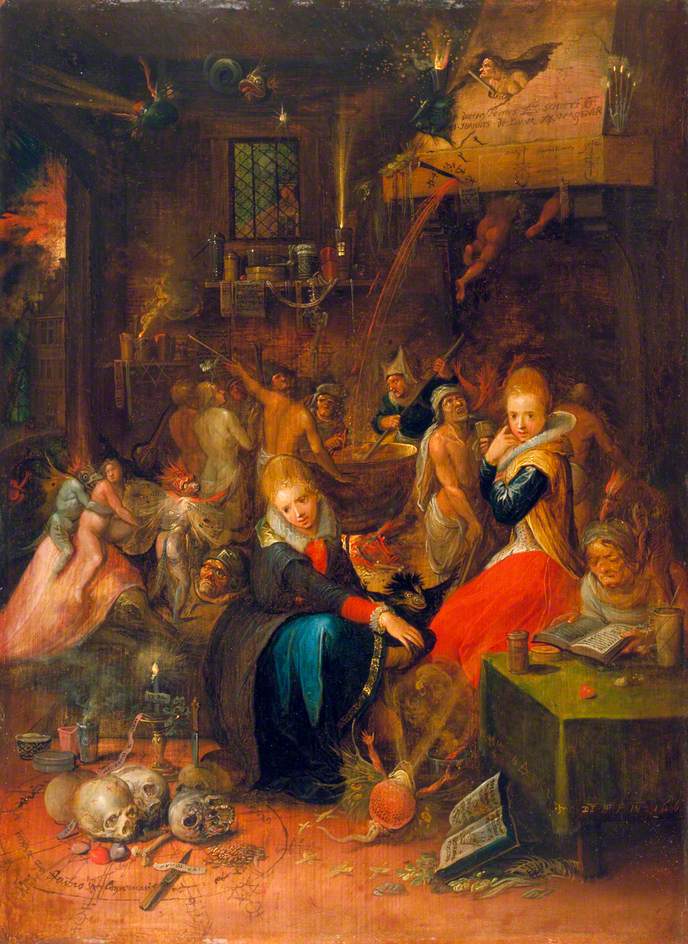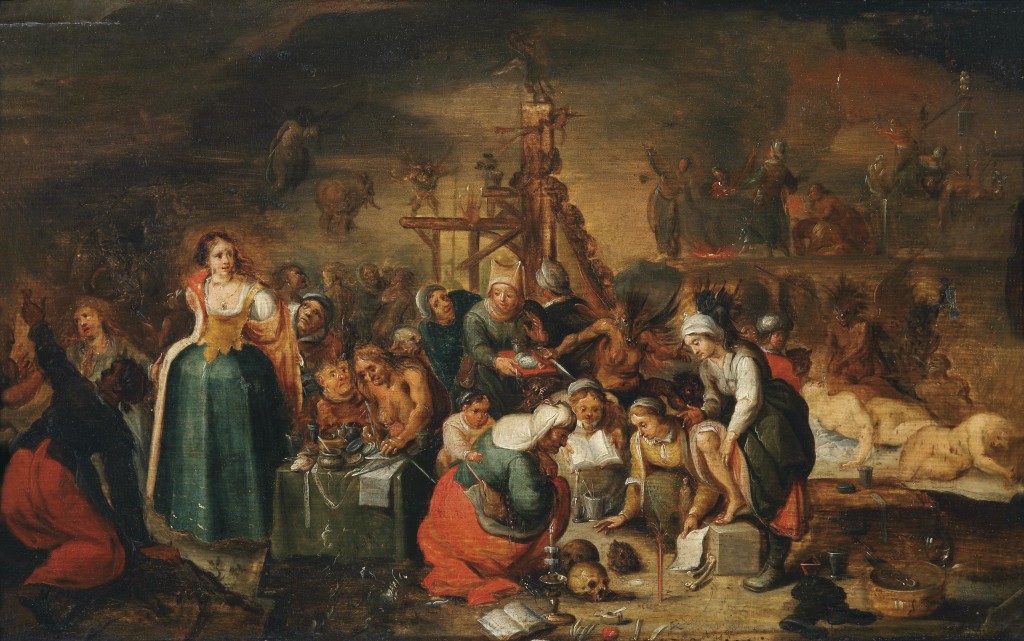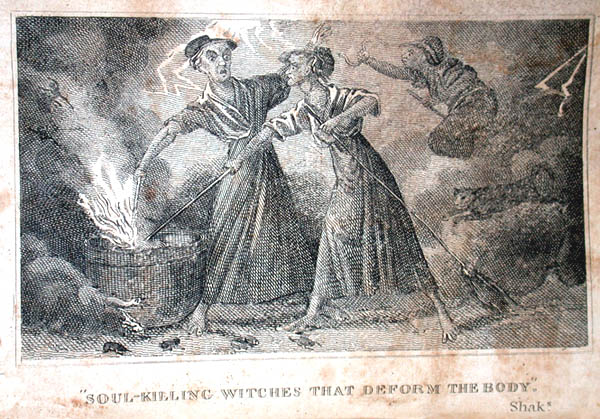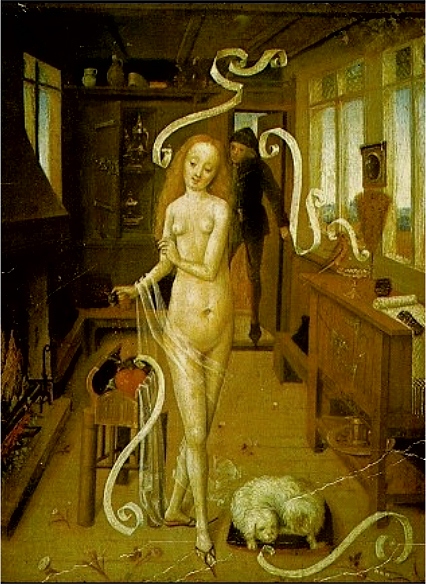Witch hunting. How can such lunacy have possessed humanity for the better part of the sixteenth and seventeenth centuries? It seems inconceivable, and yet, though the numbers have often been exaggerated, the facts themselves are not in doubt. The European witch mania is a history of collective cruelty and credulity that was instituted, inflamed and prolonged by organized religion.
For there can be no doubt that the witch craze was organized, and received its final organization at the end of the fifteenth century by the medieval Church. Little by little,in the later Middle Ages, the Church had equated witchcraft with the more serious crimes of sorcery and heresy, and the Schoolmen had systematized, embellished, and condemned those hitherto disregarded superstitions and hallucinations that spring at bottom, from rural poverty. By such attentions they had built up and advertised a grotesque new mythology for which the inquisitors afterwards, by their torture and their questionnaires, obtained massive confirmation.

—Witches’ Sabbath
by Frans Francken II
Victoria and Albert Museum
Date painted: 1606
Oil on oak panel, 46.6 x 35.2 cm
Collection: Victoria and Albert Museum
—click image for source…
For it is quite clear that witchcraft, as a systematic cult, was not discovered; it was invented by the inquisitors. Everywhere, the same pattern established itself: first the persecutors, then the heresy. It was the inquisitors who discovered the first witches in Hungary and Scotland and who spread the epidemic over Germany.
The Dominican inquisitors had long been burning witches in the bigoted Alpine valleys, and it was they who solicited from Pope Innocent VIII the first general Witch Bull. Two years later the same inquisitors, as if in response to the Bull, advertised the disease they were now armed and authorized to cure. They then published The Hammer of Witches, from which date the delusion began its fabulous course. The papal authority sent it out all over Europe,meaning the disease was created by its pretended remedy.

—Artist
Workshop of Frans Francken (II) (1581–1642)
Title German: Hexenküche
Description
Deutsch: Werkstattwiederholung des Gemäldes von 1607
Date 17th century—WIKI
At first the educated laity were contemptuous of this clerical nonsense. How could lawyers, scholars, philosophers, in the age of Erasmus, swallow these Alpine credulities, this monkish phantasmagoria. The European humanists, putting, as the clergy sourly complained, human reason before divine theology, poured eloquent scorn on yet another instance of barbarous folly. ( to be continued)…
ADDENDUM:
(see link at end)…It began with the trial and execution of an eight-year-old girl for witchcraft in the spring of 1630. Compelled to name others involved in an alleged nighttime dance with the devil in the German town of Oberkirchen, young Christine Teipel’s confession sparked a wave of fingerpointing and subsequent trials. Within just three months, 58 people, including 22 men and two children, were burned at the stake there.
The Oberkirchen trials represent just a small fraction of those that led to the execution of some 25,000 alleged witches between 1500 and 1782 in Germany. The country was a hotbed of persecution, says witch-trial expert Hartmut Hegeler, explaining that some 40 percent of the 60,000 witches who were tortured and killed in Europe during the infamous era were executed in what is now modern Germany. Hegeler, 65, a retired Protestant minister and college religion instructor in the west
German town of Unna, is now working to rehabilitate these supposed witches city by city.
— This question remains unanswered. Because of the nature of their alleged crime, victims were not allowed to be buried in consecrated ground. Tradition has it that families came to Gallows Hill to claim their relatives and buried their bodies privately. A memorial honoring the victims of the witch trials was built in Salem in 1992.
How long did the witch trials era last?
The witch trials era lasted less than a year. The first arrests were made on March 1, 1692 and the final hanging day was September 22, 1692. The Court of Oyer and Terminer was dissolved in October of 1692.
What was the aftermath of the trials?
Jurors and magistrates apologized; restitution was made to the victims’ families and a Day of Fasting and Remembrance was instituted. Little is known of the lives of the afflicted girls. —click image for source…
“We owe it to the victims to finally acknowledge that they died innocent back then,” Hegeler told SPIEGEL ONLINE. “But this is not just about the past — it’s a signal against the violence and marginalization of people that goes on today.”
It was mainly women who were targeted, although there were also a surprisingly high number of men as well as a few children like Oberkirchen’s Christine Teipel. They were accused of not only cavorting with the devil, but also of causing insect plagues, bad weather, ruined harvests and even spoiling the production of beer. Read More:http://www.spiegel.de/international/germany/burned-for-spoiling-beer-germany-rehabilitates-its-persecuted-witches-a-804288.html






 COMMENTS
COMMENTS